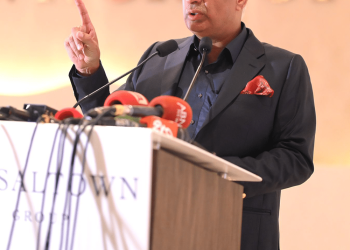Boeing’s 737 Max is a more fuel-efficient version of the American aerospace company’s popular 737, the best-selling airliner ever. Airlines have flown Max jets for just seven years, but in that short time two of them crashed, killing 346 people, and the plane has become a symbol of safety concerns swirling around Boeing.
Regulators around the world grounded all Max jets in March 2019, after the second crash. That led to the ousting of Boeing’s CEO. His successor announced plans to step down after the Federal Aviation Administration grounded a particular model of the Max in January, when a panel covering an unused emergency exit blew off an Alaska Airlines Max in flight.
The blowout led to government investigations, including a criminal probe by the Justice Department.
Here is a timeline of key events in the history of the Max:
August 2011: Boeing announces the Max, a 737 with larger engines, instead of designing a new plane to compete with the A320neo from rival Airbus.
August 2015: The first 737 Max plane rolls off the production line.
January 2016: The 737 Max takes its first test flight.
March 2017: Federal Aviation Administration certifies the 737 Max 8. It approves a larger version, the 737 Max 9, 11 months later.
May 2017: Malindo Air, a Malaysian subsidiary of Indonesian budget airline Lion Air, is the first to receive a 737 Max.
May 2017: The Max makes its first commercial flight on May 22 from Malaysia’s capital of Kuala Lumpur to Singapore.
September 2018: By the end of the month, Boeing has received orders for nearly 5,000 Max jets.
Oct. 29, 2018: Lion Air Flight 610, a Boeing 737 Max 8, plunges into the Java Sea off the coast of Indonesia minutes after takeoff from Jakarta, killing all 189 people on board.
November 2018: Attention focuses on a new Boeing flight-control system called MCAS that Boeing did not disclose to pilots and airlines. Indonesian investigators say the Flight 610 pilots struggled for control as the automated system pushed the nose of the plane down more than two dozen times.
March 10, 2019: Ethiopian Airlines Flight 302, a Boeing 737 Max 8, crashes after takeoff from Addis Ababa, Ethiopia, killing 157 passengers and crew members.
March 2019: Within days of the second crash, the U.S. Federal Aviation Administration and regulators in nations around the world order the grounding of all 737 Max jets.
April 2019: A preliminary report by Ethiopian officials shows similarities to the Indonesia crash. The report indicates Flight 302 pilots tried to follow Boeing instructions for an MCAS malfunction but couldn’t level the nose manually because of the plane’s high speed.
May 2019: Boeing discloses a safety alert to warn pilots about bad readings from a key sensor on the Max did not work, but the company did not tell airlines or FAA about the problem until after the first Max crash.
Dec. 23, 2019: Boeing ousts CEO Dennis Muilenburg, who was seen as pressuring the FAA to lift the Max grounding order.
Jan. 13, 2020: David Calhoun, the chairman of Boeing’s board, takes over as CEO and says he sees “opportunities to be better, much better.”
Nov. 18, 2020: FAA announces its approval of a flight-control software update and other changes by Boeing, clearing the way for airlines to resume flying 737 Max jets.









